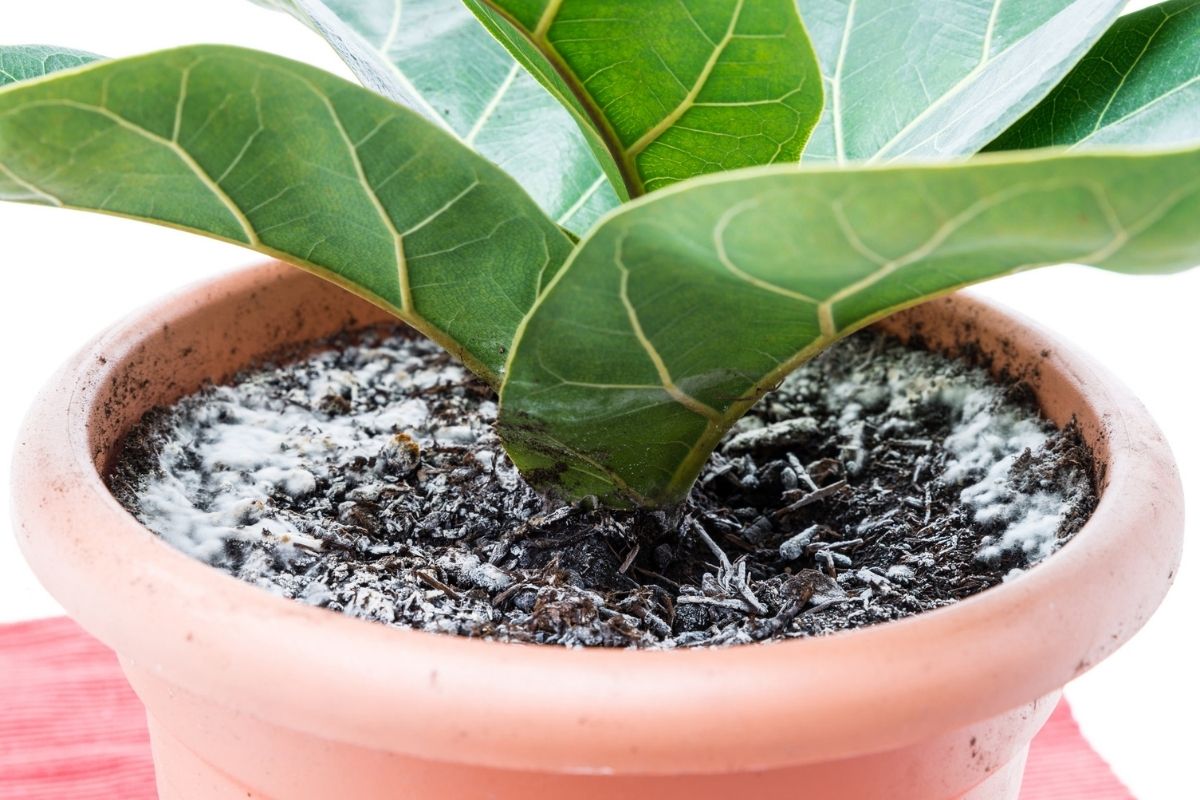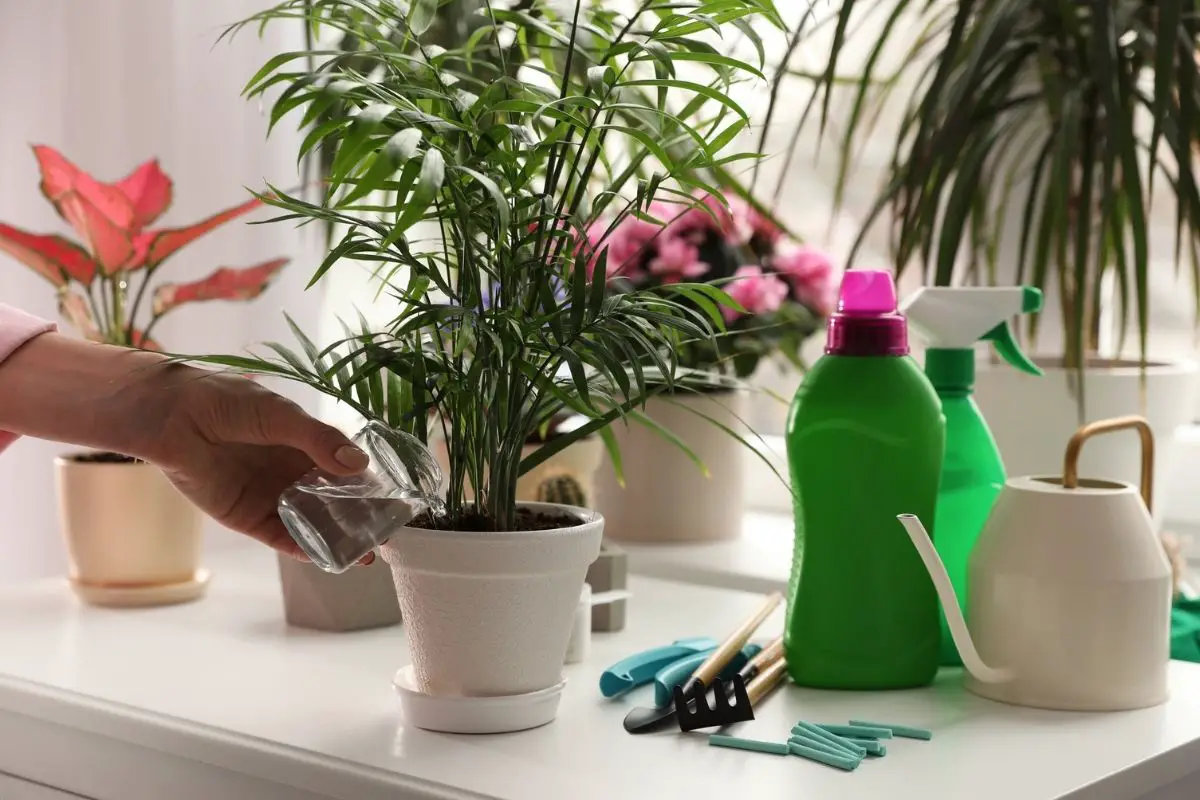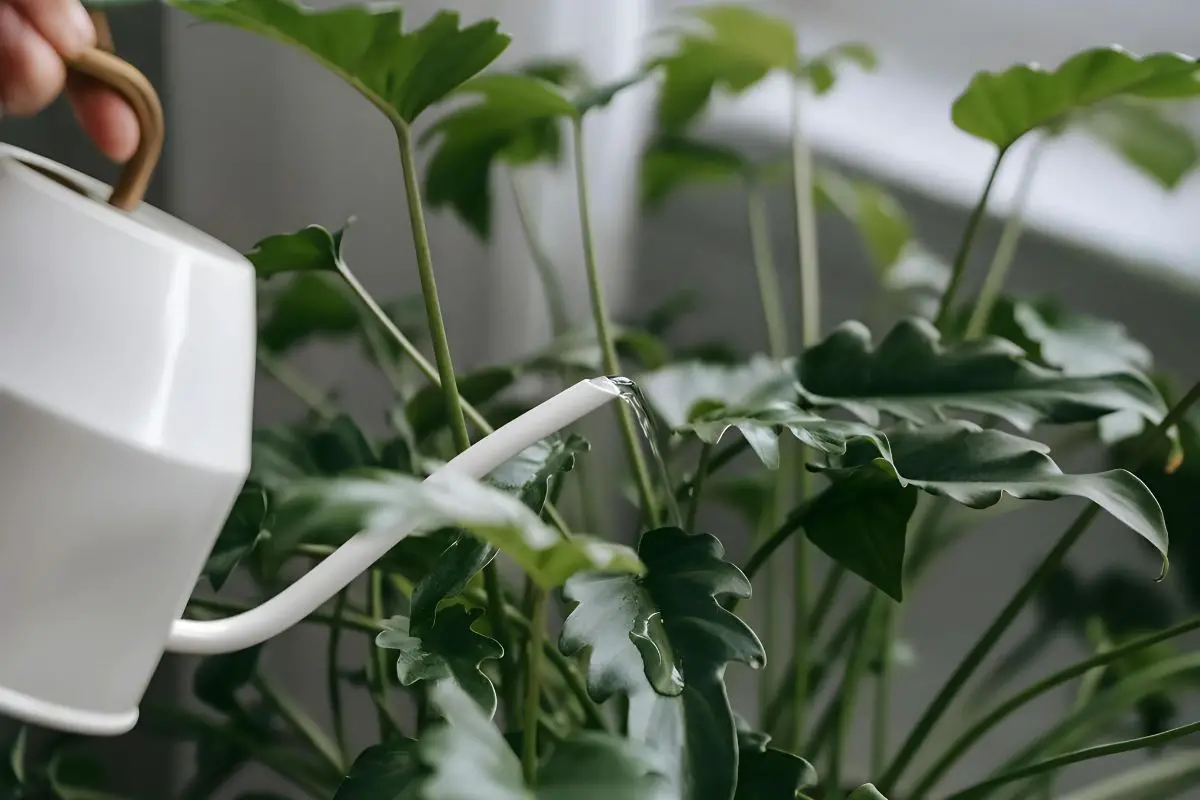Maybe you check your plants every morning or are more of a once-a-week plant parent. Either way, you may wake up one day to find your soil looks like it’s been burnt in the night. Gray, sooty soil that looks like ash can signify something happening to your plant.
If your soil looks like ash, it could be covered in fungus or mold. Other possible reasons include the soil being too soggy, having a nutrient imbalance, or containing mildew. There are also some soil types that just naturally look ashy.
Below, we will discuss the cause and symptoms of each possibility. We will also give you some DIY fixes for each problem and a look into what healthy soil should look like.
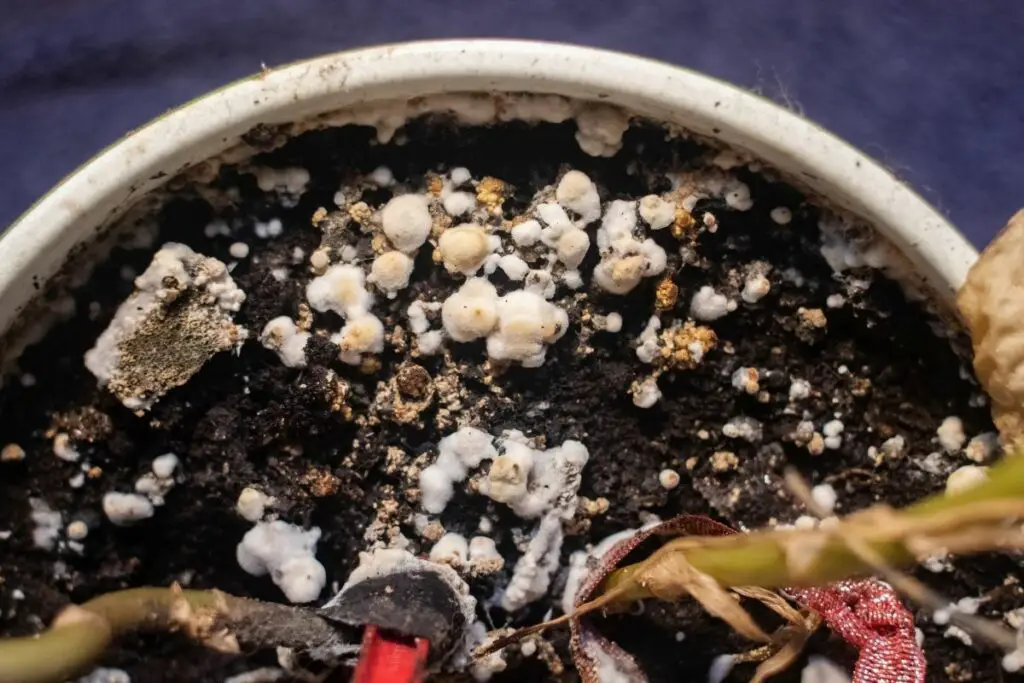
1. The Soil Is Covered in Fungus or Mold
Ashy soil might look gray, be soft to the touch, or remind you of soot. However, you probably have a fungus on your hands, which is more common. Gray fungus and mold are prevalent in plants, and while some aren’t harmful in the least, others can ruin your plant’s health.
It’s more typical to find this gray mold on the roots and leaves of your plants, but it’s possible to find them in the soil as well. It’s most common in wet or humid conditions and can be caused by a change in your watering routine or constantly overwatering your plants.
Additionally, it could be caused by drainage issues.
Knowing the Difference Between Harmful and Harmless Fungi
Mold is a type of fungus that has a pretty bad reputation. You don’t want mold in your home, in your garden, or likely anywhere near you, but the fungus can sometimes be good for plants. We know that fungi can live in harmony and even have a symbiotic relationship with our house plants.
If you have a gray mold or fungus in the soil, it could be a mycelium or saprophytic fungus. Some gardeners work hard to cultivate mycelium in their gardens to help plants absorb water and nutrients.
But if you’re noticing something more nefarious, you should go with your gut. If you’ve determined that it’s not just your soil that looks like ash, but your plants that look covered or are developing rips, tears, or holes due to a gray substance, this is likely a mold problem. Sooty mold can damage your plants and may even indicate an insect infestation.
You should be able to tell whether you have a gray mycelium or a gray mold by seeing how your plants have been affected. If they seem to be doing well or even better, you likely have healthy fungi. Otherwise, while there may be several other issues, you should do some more investigation on the substance.
Unfortunately, there’s no tell-tale sign like a scent or a texture that will send you one way or another. To determine the difference, you’ll have to send a soil sample to a laboratory for a thorough analysis. This can be especially helpful if the ashy mold has taken over a significant part of your garden.
Fixing a Fungi Problem
If you find that you have a harmful fungus in your garden, you have a few options.
For Potted Plants
- Get rid of the old soil but sanitize the old pot if you plan to reuse it in the future.
- Examine the plant carefully. If over 30% of the plant is damaged, you’ll need to burn it to prevent the spread of the fungal infection. Otherwise, you can still save it.
- Remove the damaged roots, leaves, or stems using sterile pruning shears.
- Repot the plant in fresh and moist soil in a new and sterile pot.
For Garden Soil
Remove the moldy layer with garden gloves and a trowel and use natural fungicides on your soil. You can drench your soil in 6% hydrogen peroxide weekly for 3-4 weeks before growing new plants in it.
Alternatively, you can drench the soil with a neem oil solution containing one tablespoon of neem oil and one tablespoon of liquid soap for every liter (0.26 gal) of water. Doing this once every two weeks should eliminate the fungi.
About 2-4 weeks after repotting, you can also apply this solution on the recovering plant as a foliar spray to eliminate pest and fungal problems.
Additional Fixes
A few weeks after the antifungal treatment on the soil, you’ll need to amend the soil with compost to reintroduce beneficial microbes. It’s crucial to wait a few weeks to ensure that the antimicrobial effects of the treatment are no longer working. Otherwise, the new microbes will be killed off.
When growing new plants in the treated soil, be wary of your watering routines, utilizing a moisture meter or another tool to ensure you’re not overwatering.
Put your potted plants in a sunny place (while still considering your plant’s sun requirements) and space them out to make sure they dry enough after watering.
Hopefully, the ashy gray soil you found is just an indicator of the fungus that can help your plants or give you a hint that you’re overwatering. Otherwise, you should consider taking as many action steps as possible to save your plant, isolating it from other plants until it’s doing better.
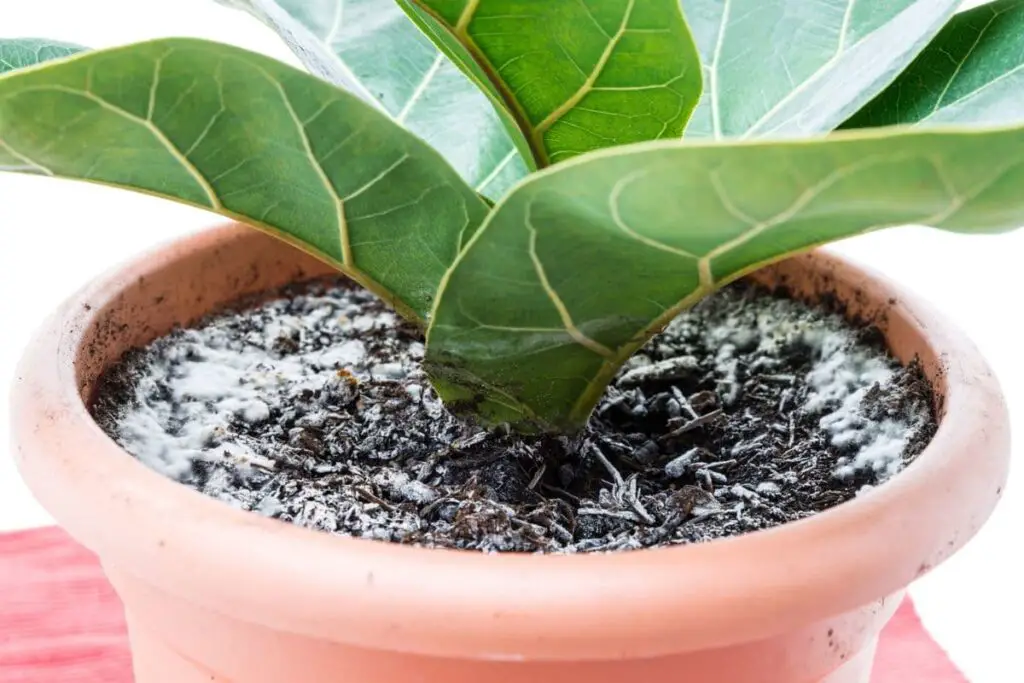
2. The Soil Is Soggy
Soggy soil may cause the gray, ashy substance in your pot.
If you tend to overwater your plants or water them before they completely dry out from their last shower, you could be keeping your plants’ soil soggy. As mentioned above, soggy soil can lead to fungus, mildew, or compaction.
It could also indicate drainage problems in your plant.
The gray soil on top of your plant may be just the beginning of the problem—eventually, this can lead to root rot and a plant that will no longer grow.
How to Know if You Have Soggy Soil
Though you may think it’s pretty straightforward, you should do some thorough checking to see if you have soggy soil. Noticing soil that’s wet and soppy is the most obvious indicator, but having soil that’s hard and compact will also be a sign you’re overwatering.
Plants need time to absorb water before they get another dose. Some plants require drying out thoroughly before they are watered again. If your watering habit doesn’t let your plants dry thoroughly, you’re essentially drowning them with water.
Fixes for Soggy Soil
If it’s become compacted, soggy soil may be too far gone to continue using. You may consider repotting your plant in healthy soil and using a moisture meter before every watering session to confirm whether or not the soil is dry enough for your plants.
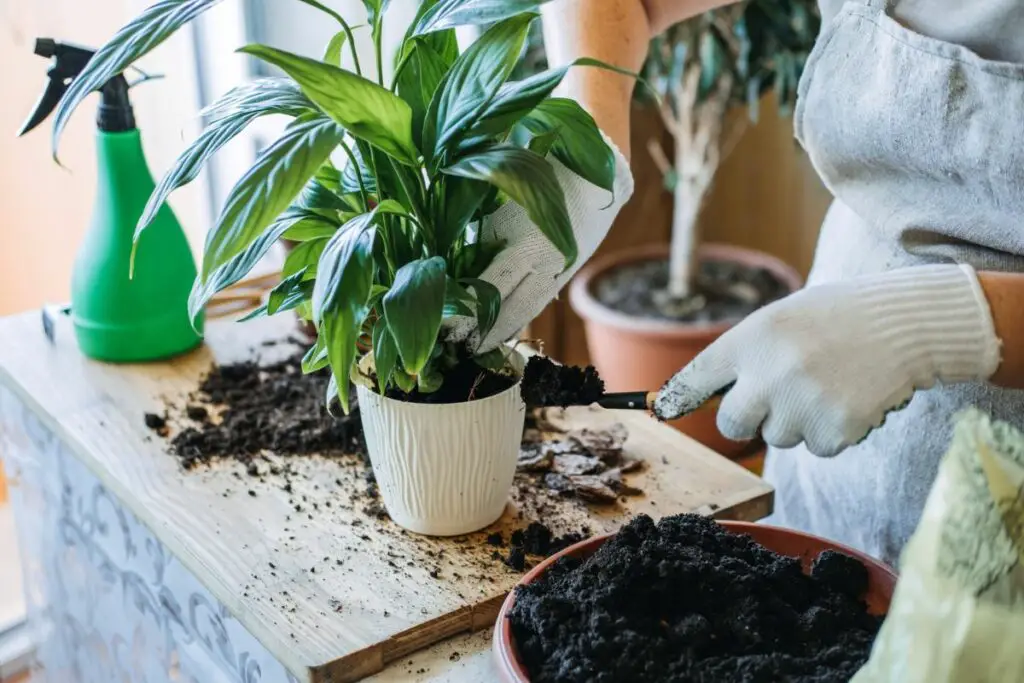
Moisture meters can also sometimes detect sunlight, humidity, and pH so you can see if you have other problems going on.
You’ll also want to read up on your plants to see what they prefer. Just like humans, all plants are different. Some like to dry out completely, while others might enjoy full rain showers every other day.
Knowing the difference and writing it down in a notebook until you can remember may save your plants from becoming constantly oversaturated. It can also help preserve your soil’s quality.
You can also improve the soil drainage by adding perlite into the mix. Alternatively, you can move your plant into a new and porous pot with bottom holes for better aeration and drainage.
3. There’s a Nutrient Imbalance
If you’ve noticed that your outdoor gardening area has been overtaken with gray, ashy soil and there are no indications of mold, you may have a nutrient imbalance.
Rich soil tends to have a darker color because the nutrients and minerals have dark pigments. For instance, large humic content makes the soil darker, iron gives the soil a red tinge, while manganese oxide contributes to the darker (black) appearance.
On the other hand, calcium, magnesium, sodium, and many other mineral salts can accumulate on the soil surface, making it look like ash.
Understanding the Natural and Man-made Causes
While a shift in nutrients can happen due to poor gardening practices, it most commonly happens naturally. For instance, regions with frequent rains and waterlogged soils can have compact and clayey soil. This can harbor anaerobic bacteria that can reduce iron and manganese oxides, turning them pale.
On the other hand, areas with periodic heavy rains followed by extreme heat with high evaporation rates can leave the soil to dry up quickly with the mineral salts forming an ashy crust on the soil’s surface.
But if it’s happening to your indoor garden, it’s possible that you’re watering your potted plants frequently with hard water. Tap water, depending on your region, may contain high levels of salts that can remain on your potting soil’s surface, giving it an ashy appearance.
Another possible reason could be the frequent application of granular fertilizers without adequate watering. This can cause the fertilizers to form a crust on the surface of the soil and fail to reach the root zone.
Fixes for Nutrient Imbalances
You can scrape the ashy surface of your soil and inspect the layer below. If the discoloration is evident only on the surface, you can replace the removed layer with fresh soil. You can also lightly aerate the soil or improve drainage to leach the excess salts with deep watering using filtered or rainwater.
You can also avoid waterlogging problems in your outdoor garden by making raised beds where you can more easily manage the soil’s drainage capacity.
4. There’s Mildew in the Soil
Mold can go either way, healthy or unhealthy, but mildew is usually harmful. Gray mildew will likely be more a part of your plant’s leaves, roots, and petals rather than its soil.
However, you should still be cautious, and research powdery mildew just in case. Mildew thrives in excellent, wet conditions and can attack your plants whether they’re indoors or outdoors. If you find that the gray mildew is more a part of your plant than your soil, you should immediately treat the plant for mildew.
How to Prevent Mildew From Growing in Your Plants’ Soil
Although mildew in your potting soil can be very frustrating, there are preventative measures you can take to stop future bacterial growth from infesting your soil.
The first thing to consider is how frequently you’re watering your plants. If you’re not watering them too often but they live in a poorly-ventilated area, this can create ideal conditions for mildew to grow.
Overwatering your soil can also have the same effect of creating a damp, humid environment that mildew loves. You should always test your soil before you water it, and if the top layer of potting soil is completely dry, it could do with some water.
Otherwise, try to resist the temptation to drown your plant and the potting soil in water.
Additionally, your potting soil container should have an adequate drainage system. This means that excess water can easily seep out, rather than sitting in the soil and creating a haven for harmful microbes. If your container doesn’t have drainage holes, replace it with one that does.
Mildew thrives in dark, humid places. If your plant is kept in a dark environment, try moving it out somewhere brighter. The sunlight will dry the soil faster, preventing mildew from growing. This basic preventative measure also means your plant will enjoy much more natural sunlight.
Finally, you should consider regularly removing any dead organic matter that falls onto your potting soil, which can include leaves and small branches. Although they can break down and benefit your plant eventually, they decompose on the soil surface slowly.
The slow decomposition of this organic matter will attract mold spores and fungi, so try to clean up the soil surface occasionally.
How to Get Rid of Mildew
Mildew is usually the cause of gray potting soil, so knowing how to get rid of it permanently is essential.
If you’ve got spare potting soil mix lying around, sometimes the best thing to do is repot the plant completely. Doing so places your plant in a new, healthy environment without fear of contamination from the old potting soil.
However, repotting will only work if the mildew hasn’t worked its way up to the plant’s roots and leaves. If any leaves on your plant have white or gray patches, you’ll need to prune your plant and carefully snip off any infected roots and leaves.
You can then repot the plant and wait a few weeks before applying a neem oil solution as a foliar spray to prevent reinfection.
5. It’s Just a Type of Soil That Looks Ashy
While I assume most are looking for some guidance on soil that’s turned to ash overnight, there’s also a possibility that a new gardener or someone who has adopted a plant has found that the soil is gray like ash without any indication of problems. Some soils are just gray, ashier, and look like soot.
Factors That Contribute to the Soil Color
Garden and potting soil can range in color from gray, red, or light brown to dark brown. In most cases, darker soil is richer in organic matter and is much preferred. However, having ashy or gray soil doesn’t always indicate a problem.
Here are the factors that contribute to a soil’s ashy color:
Mineral Content
A naturally gray soil may indicate high glauconite or quartz minerals. It could also indicate overwatering, resulting in the growth of anaerobic bacteria that facilitate the chemical reduction of iron and manganese, giving the soil a mottled gray appearance.
Furthermore, it could’ve been caused by a plant being grown near or in gravel before making its way to you.
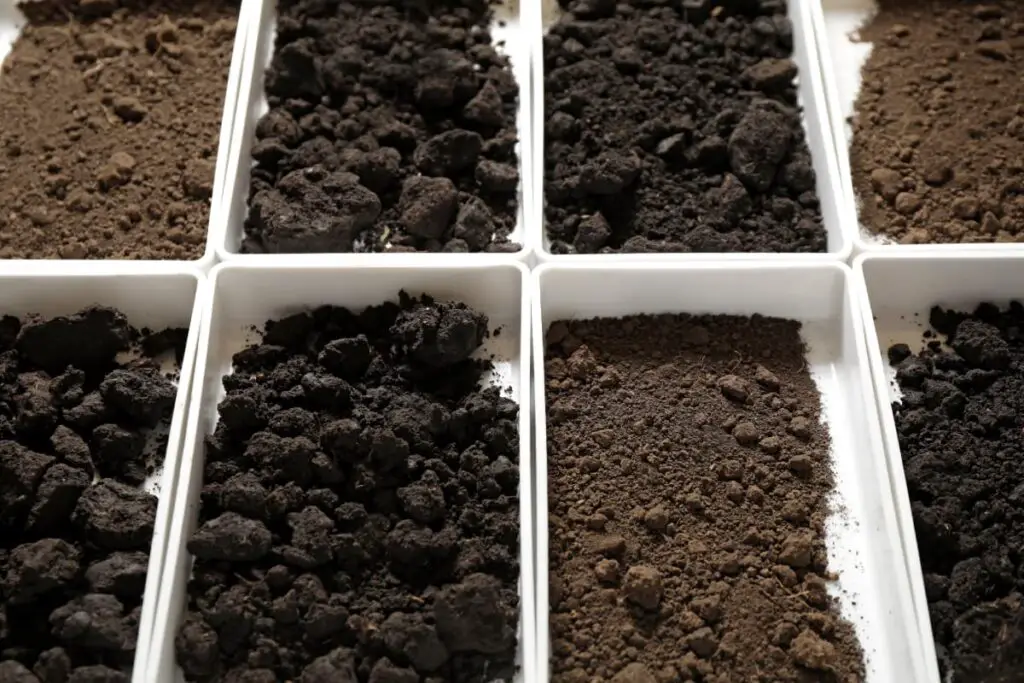
You may not realize it, but your plants need trace amounts of iron to thrive and gather energy from the sun. The primary place they’ll get their all-important iron supplements, along with all the other nutrients they need, is through the soil.
Microbial Content
Some types of bacteria will dive deep into rich soil and suck out the nutrients meant for the plants, pulling out essential iron and manganese, as well.
Additionally, your potting soil might look a bit ashen because it has a layer of mold over the top. You’ll be able to see this mold quite easily, as it looks a bit like a spider’s web over the topsoil and might look fluffy. Mold indicates that there is too much moisture and decomposing material in the soil.
Finally, another reason your potting soil might be gray is because of a fungal infection. Many types of fungi aren’t harmful to your plants, but their presence may still be a telltale sign that something in your potting soil just isn’t quite right.
Most soils have some measure of fungal material within them, which is often a good indicator of healthy soil. However, some varieties of fungus will cause havoc with the delicate ecosystem of your potting soil, creating fluffy, damp areas of the topsoil that are leaching crucial nutrients from the soil.
What Color Should Your Potting Soil Be?
Most potting soils will be a mixture of organic matter, amendments, and basic soil, which means that, more often than not, your soil will be brown. The healthiest soil is dark brown in color, and the darker the color, the more organic material, which is called humus.
If your potting soil is a nice dark brown, this means it contains enough nutrients to happily house your plants. If your potting soil is lighter in color and becomes yellow or white, this can often mean that it has been leached of nutrients.
Adding a few soil amendments or a handful of compost can do the trick to turn that soil’s smile upside down.
Signs of Unhealthy Soil
Knowing the signs of unhealthy potting soil is a good indicator of how well your plants will do in the soil. More often than not, the soil will let you know when it’s not feeling its best, usually by smell, color, and a few other things.
Let’s look at these in more detail below:
A Bad Odor
The most convenient way to see if your potting soil is unhealthy is to see if it smells bad. A foul-smelling soil indicates over-absorption of water and mold growth. Lack of adequate drainage can also make your soil smell bad.
In addition, if you’ve used unfinished compost with a chunky texture in your soil, it will likely give off a rotten smell. Finished compost should smell earthy but not unpleasant.
Presence of Insects
The presence of bugs can indicate unhealthy potting soil. Little flying creatures will attack decomposing organic matter in the soil, leaching out essential nutrients and making the soil incompatible with life.
Too Many Soil Amendments
Putting too many soil amendments in your potting soil can offset its natural balance. Peat moss, in particular, tends to decay relatively quickly. This means your potting soil might become too dense to support your plant roots.
Failure to Thrive
If you’ve been looking after your plants properly and they’ve suddenly wilted or died, the potting soil might be the problem. Your plants will often be the first ones to tell you their soil isn’t good anymore.
Improve Your Soil With Organic Matter and Fertilizer
The only way to improve unhealthy potting soil is to have the correct balance of soil, organic matter, and fertilizer. Organic matter is an excellent soil amendment, and it’s relatively inexpensive to make yourself at home.
However, be careful not to add too much organic matter to your soil, or you’ll upset the delicate natural balance of the soil.
Conclusion
An ashy, gray soil can mean any number of things. Retrace your gardening steps and try to remember if you’ve done anything differently to your plant, as it can be an indicator of what the cause was.
Typically, gray ash is a mycelium fungus that means no harm to your plant and can even help it absorb water and nutrients. However, if it’s harmful fungi, mildew, or an indicator of soggy soil or nutrient imbalance, you will need to take action steps to save your plant and get your soil back to optimal health.

